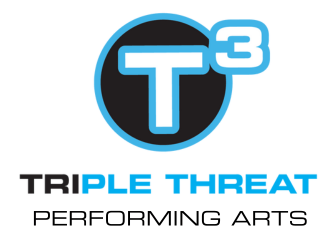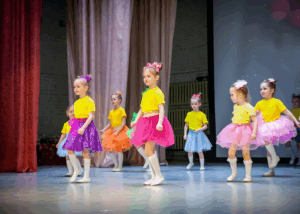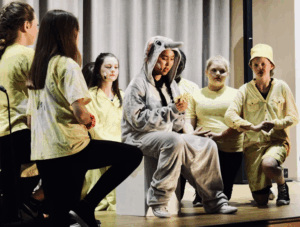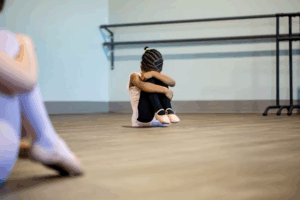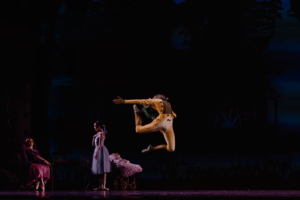

When thinking about arts education for your child, the first subjects that come to mind are often math, science, or reading. These are undeniably important, but what about the arts? Dance, voice, acting, and even culinary arts are just as powerful when it comes to shaping confident, well-rounded students. When kids explore all of this together, they become more adaptable, creative, and resilient in school and in life.
In San Diego and beyond, parents are recognizing that multidisciplinary arts programs don’t just create performers; they cultivate leaders, innovators, and empathetic community members. This is precisely the mission of T3 Triple Threat Performing Arts in San Diego, where students can immerse themselves in multiple disciplines, from stage performance to culinary creativity.
Why Multidisciplinary Learning Matters


Multidisciplinary learning combines multiple art forms—dance, voice, acting, and culinary arts—to give students diverse ways to express themselves and solve problems. Instead of limiting their growth to specific subjects, children learn to make connections across fields, which sparks innovation and strengthens adaptability.
This approach isn’t just about learning different skills; it’s about developing the ability to approach challenges from multiple angles. For instance, a child might draw on rhythm learned in dance when managing timing in a culinary project or use acting skills to confidently present a science project in class.
Studies strongly support the benefits of arts integration. Research shows that schools with strong arts programs see a 20% higher graduation rate than those without (zipdo.co). Students involved in arts education also perform an average of 10 percentage points higher on standardized tests compared to their peers (gitnux.org).
For parents, these statistics highlight something important: investing in arts education is not only about nurturing creativity—it directly supports academic achievement and future opportunities.
Dance: Building Discipline and Confidence


Dance is far more than movement to music; it’s a discipline that shapes the body, mind, and spirit. For children, dance builds coordination, balance, and stamina. These physical benefits are obvious, but dance also teaches focus, discipline, and perseverance—skills that carry over not only into academics, but all areas of life.
Through dance, students learn structure and accountability. Choreography requires memory and concentration, while performances demand resilience under pressure. In fact, research has shown that regular dance participation can improve concentration and reduce stress, helping students perform better academically.
Perhaps most importantly, dance fosters confidence. Every time a child steps on stage, they gain courage. They learn to trust their bodies, their preparation, and themselves. This boost in self-esteem extends into the classroom and social settings, allowing children to feel more comfortable speaking up, collaborating, and taking healthy risks.
Voice: Strengthening Communication and Expression


Voice training may seem like it’s just about singing, but it’s much more. It teaches children how to use their voices with strength, clarity, and purpose. Whether they’re performing a song, delivering lines in a play, or simply speaking in front of their class, these skills are invaluable.
Voice training develops breath control, articulation, and projection—all critical tools for communication. For shy children, voice classes provide a safe space to overcome anxiety and grow into confident speakers.
There’s also a deep emotional side to voice training. By interpreting lyrics and connecting to music, students learn empathy and emotional intelligence. They understand not only how to express their feelings but also how to interpret and connect with the emotions of others.
Academically, voice training supports literacy and language development. Studies suggest that students involved in music and vocal training often score higher in reading comprehension and verbal reasoning. That’s because singing strengthens memory, rhythm, and language processing.
For parents, this means that voice training isn’t just an extracurricular—it’s a foundation for stronger academics and more confident communication in every area of life.
Acting: Teaching Empathy and Adaptability


Acting may seem like play, but it’s one of the most powerful ways for children to develop empathy, adaptability, and resilience. When your child steps into the shoes of a character, they practice seeing the world through someone else’s perspective. This helps them build compassion and social awareness.
Acting also sharpens public speaking and nonverbal communication skills. Students learn how to project their voices, use body language, and express themselves clearly—essential tools for school presentations, leadership roles, and future careers.
Another critical lesson from acting is adaptability. Performances don’t always go as planned—lines are forgotten, props break, or timing shifts. In these situations, students acquire the ability to think quickly and adapt, fostering resilience that will benefit them in all aspects of their lives.
For many children, acting also helps overcome shyness and stage fright. With supportive coaching and practice, they learn that vulnerability and expression are strengths, not weaknesses. This confidence often carries over into their academic and social lives, helping them feel more comfortable and capable in every environment.
Culinary Arts: Creativity Meets Practical Life Skills


Culinary arts may not immediately come to mind when parents think of arts education, but they provide both creative expression and essential life skills. Cooking teaches children measurement, timing, and organization—practical skills that connect directly to math and science.
At the same time, culinary training sparks creativity. Students experiment with flavors, colors, and presentation, learning to innovate and adapt. This kind of problem-solving builds flexibility, much like choreographing a dance or interpreting a role in acting.
Culinary arts also emphasize teamwork and leadership. Like in a stage production, everyone in the kitchen has a role. Students learn collaboration, communication, and time management. They also experience the reward of creating something meaningful that brings joy to others—a lesson in service and empathy.
By blending creativity with practicality, culinary arts round out multidisciplinary learning and give students valuable skills they’ll use for life.
The Academic and Social Benefits of Arts Integration


Parents often wonder how the arts connect to academic achievement. The answer is clear: arts education improves both educational and social outcomes.
- Students in arts-rich schools demonstrate up to 50% higher engagement levels than those without arts programming (wifitalents.com).
- Prioritizing arts programs can lead to a 14% increase in daily participation in schools (zipdo.co).
- Students involved in multidisciplinary arts also show higher levels of critical thinking, problem-solving, and creativity—all essential skills for success in STEM and beyond.
For parents, this means arts education isn’t simply “fun” or “extra.” It’s a proven pathway to better learning outcomes, stronger social skills, and healthier emotional development.
The Role of Community and Accessibility
One of the most valuable aspects of multidisciplinary programs is that they bring students together across different backgrounds. Arts programs foster cultural awareness and inclusivity, allowing children to learn about traditions, stories, and perspectives different from their own.
In San Diego, organizations like T3 Triple Threat Performing Arts make these programs accessible to all families. Through community-focused initiatives and pay-as-you-can opportunities, T3 ensures every child can discover their creativity and build confidence, regardless of financial circumstances.
This commitment to accessibility benefits individual students and strengthens the community as a whole. Children who grow up with confidence, empathy, and creativity become adults who contribute positively to society.
Conclusion
Parents who choose multidisciplinary arts education for their children give them far more than dance, voice, acting, or cooking skills. They provide a foundation of confidence, discipline, adaptability, and empathy that will carry them through school, relationships, career, and life.
The statistics are clear: students engaged in arts programs graduate at higher rates, achieve stronger academic results, and develop critical life skills. But beyond the numbers, there’s the joy of seeing your child light up on stage, confidently deliver a presentation, or proudly serve a meal they created themselves.
At T3 Triple Threat Performing Arts in San Diego, the mission is to empower students through dance, voice, acting, and culinary arts while making these opportunities accessible to every child. By embracing multidisciplinary learning, families give their children the chance to grow as students and as leaders, creators, and compassionate individuals ready to thrive in the world.
